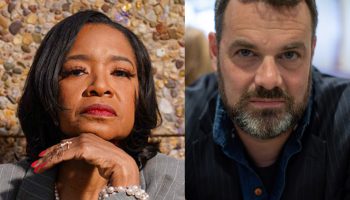Chautauqua Institution is a place where different art forms come together, and Shara McCallum will be diving into that relationship with her Brown Bag, “Poetry & the Visual Arts.”
McCallum is the poet-in-residence for Week One at the Chautauqua Writers’ Center, and her Brown Bag will be at 12:15 p.m. Tuesday on the front porch of the Literary Arts Center at Alumni Hall.
McCallum is originally from Jamaica, and her poetry has appeared in publications all over the world. Her most recent collection is 2017’s Madwoman. She serves as director of the Stadler Center for Poetry at Bucknell University, where she also teaches creative writing and poetry.
There’s a personal interest in the relationship between poetry and visual art for McCallum, but she said there’s also a long-standing tradition of poems responding to other art forms.
This particular form is called ekphrastic poetry, a term McCallum said she’ll briefly explain in her Brown Bag lecture. She said John Keats’ “Ode on a Grecian Urn” is a perfect example of this style of poetry, and that it’s one of his best odes.
McCallum said she’ll look at Keats’ famous poem and at other contemporary poets’ responses to art, such as Irish poet Eavan Boland and American poet Natasha Trethewey. She’ll look at how each poet approaches ekphrasis and discuss their artistic intent.
“At the end of the day, I hope people come for and then return to the poems,” McCallum said.
“Maybe it will encourage them to go back to Keats, or read more Natasha Trethewey or Eavan Boland.”
McCallum said she’s long been interested in the ways different types of artists create images.
“With painters and other artists, I think it’s a much more literal experience,” McCallum said. “They’re actually using color and texture and other materials to help us experience an image. I think in a way they have a leg up.”
Poets, however, have to rely on evocation to create images for their readers.
“Poetry is a pretty abstract form of art-making, because there is no sensory experience,” McCallum said. “We use language to trick the brain into feeling that you have that.”
It’s this push and pull that draws McCallum to the “bridge” between poetry and other art forms. She said visual art can often provide inspiration for poets, too.
“Sometimes the best way to get outside of yourself is to look at a painting,” McCallum said. “And the best way to see inside yourself is to look at a painting. There’s a paradox in that, which is why I love visual art.”
McCallum said she hopes her audience leaves her Brown Bag wanting to seek out the poets she discusses, as well as the images they’re responding to in their work. She said if nothing else, her lecture will be an introduction to some new poets.
“There are just so many great poets in the world to get to know,” McCallum said.




